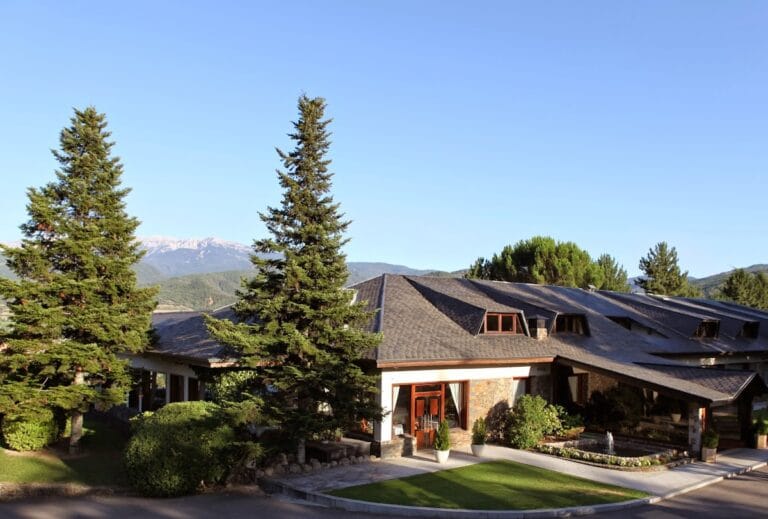Castell de Bielsa: A Medieval Fortress in Soriguera, Spain
Visitor Information
Google Rating: 4
Popularity: Very Low
Google Maps: View on Google Maps
Official Website: invarquit.cultura.gencat.cat
Country: Spain
Civilization: Unclassified
Remains: Military
History
The Castell de Bielsa, also referred to historically as Castell de Malmercat, is a fortress situated within the municipality of Soriguera in Spain. It was constructed during the medieval period by the local nobility of the region.
The first known record of the castle dates back to 1122, when a knight named Ramon Enard mentioned it in his will. He left his property in Malmercat, where the castle stands, to the nearby church of Sant Andreu. This early documentation places the fortress at the center of the small community that developed around it.
From the early 1100s through to the late 1300s, the castle was in the possession of the Malmercat family, a noble lineage who maintained a degree of independence. Initially, they were vassals under the County of Pallars and subsequently owed allegiance to the Viscounty of Vilamur. By the mid-14th century, specifically in 1338, Pere de Malmercat controlled not only this fortress but also several other strongholds and territories, such as the castles of Llavorsí, Boldís, and Tavascan, along with the castellanies of Tornafort and Montenartró, demonstrating his significant influence in the region.
In 1373, the castle endured a military assault led by Roger, the illegitimate brother of Count Hug Roger II of Pallars Sobirà. Roger seized the fortress and looted its portable goods. Following this event, the Malmercat heirs sought to reclaim control, but their legal efforts were unsuccessful. By 1381, official documents from the Corts de Cervera reported Malmercat as a domain now under the Count of Pallars, noting a small population of five hearths, or family households.
Ownership of the castle transitioned several times in later centuries. In the early 1500s, it passed to a branch of the Copons family from Lleida, who came to be known as the Copons de Malmercat. This family retained the castle for several generations. By the late 1500s, a branch of the Toralla family, based in Pallars, acquired the property; they also held nearby holdings including the castle of Glorieta and the village of Montesclado.
Into the 19th century, the castle changed hands through marriage, moving from the Copons de Malmercat family to the Castillon family, and then to the Bielsa family. The last private owner recorded was Ramón José de Bielsa y de Castillón, who died in 1935. Notably, decades earlier, in 1916, he sold the castle and its surrounding lands to Dr. Pelayo Fontsarè Eberhart, a resident of the nearby town of Sort.
Remains
The Castell de Bielsa stands as a substantial medieval structure with a complex history of alterations. Its construction reflects early medieval masonry techniques, combining well-cut ashlar stones at the building’s corners with smaller, roughly hewn stones filling the walls. This irregular but carefully arranged stonework points to construction during the 11th or 12th centuries, though precise dating remains tentative due to later modifications.
One of the fortress’ clearly identifiable features is a long, exterior wall on its western side, which remains largely intact and shows minimal alteration. Adjacent to a corner of this wall lies the base of a circular tower, surviving to a height of nearly two meters. This tower once served to control the main entrance to the castle’s enclosure and likely had defensive significance.
The western wall also includes original arrow slits, narrow vertical openings designed for archers to defend the fortress while remaining protected. Over time, this wall was altered by the addition of new openings to suit changing uses and requirements.
Historical accounts and physical traces suggest there was once a small moat near this western sector of the castle. Although this defensive ditch has been completely filled in, its former presence indicates efforts were made to fortify the site against attackers.
The interior of the castle once included a grand hall on the second floor, remembered by early 20th-century villagers as a space where community dances took place. This large room still features three sizable windows, surviving as a glimpse into the castle’s earlier residential life.
Within the castle complex is a chapel dedicated to Saint Eulàlia. This small religious space was historically connected to the main bedroom chamber of the fortress, indicating its importance to the inhabitants. Today, the chapel is deconsecrated and repurposed as storage, reflecting changing functions over time.
Currently, the castle is not used as a full-time residence. Its ownership is divided, and parts of the building serve agricultural storage or provide temporary secondary housing. Despite these adaptations, several original structural elements continue to bear witness to the castle’s medieval origins and the layers of history preserved in its walls.







